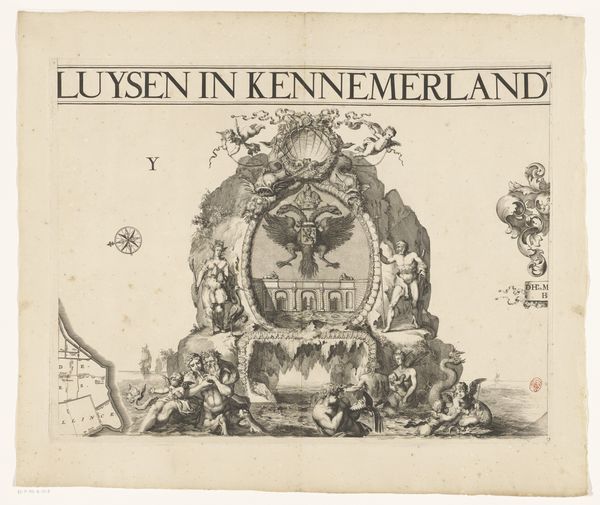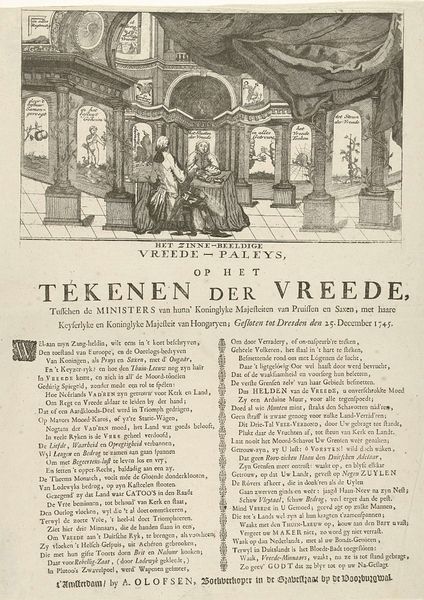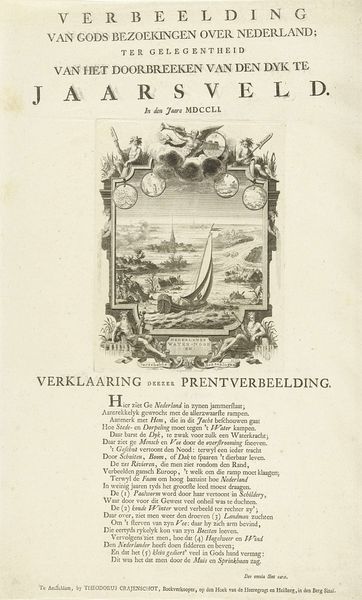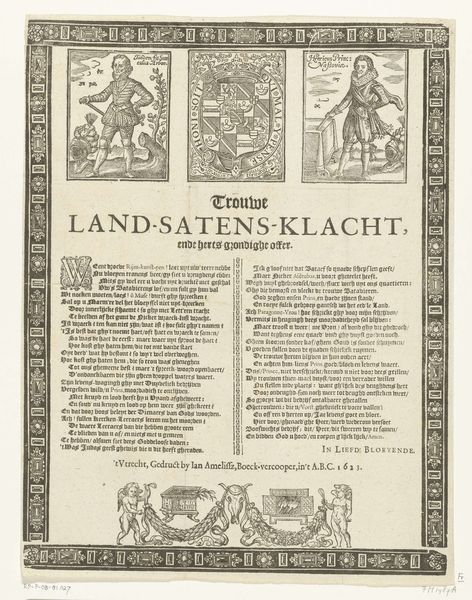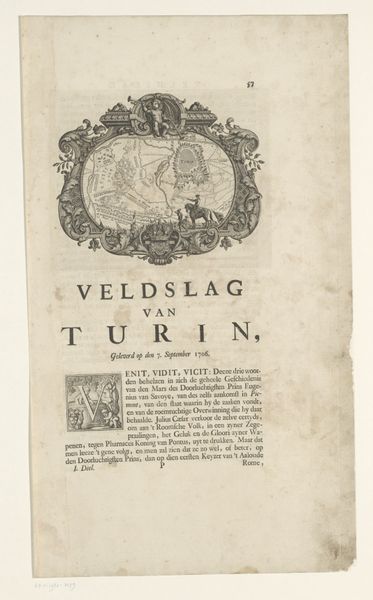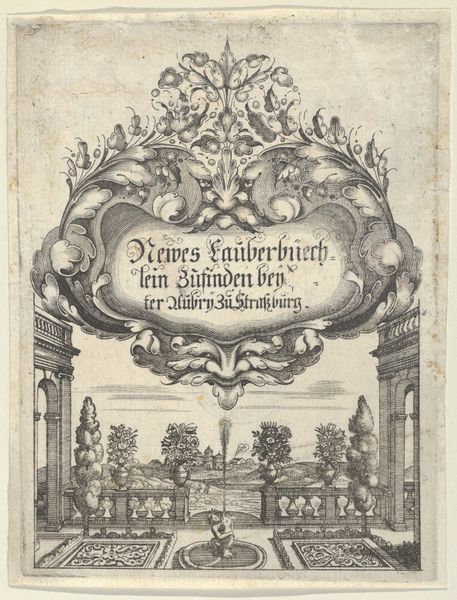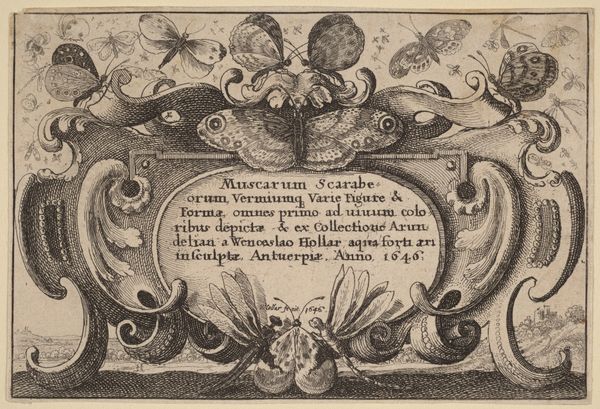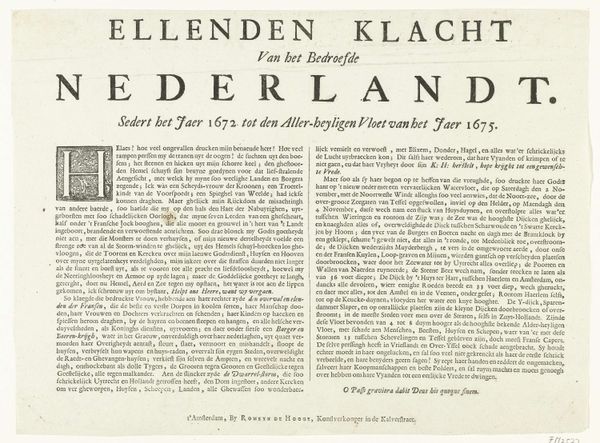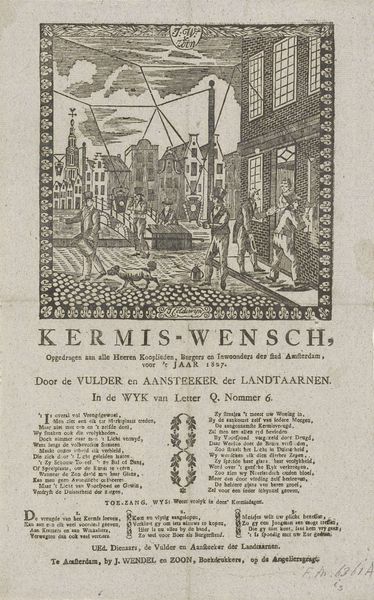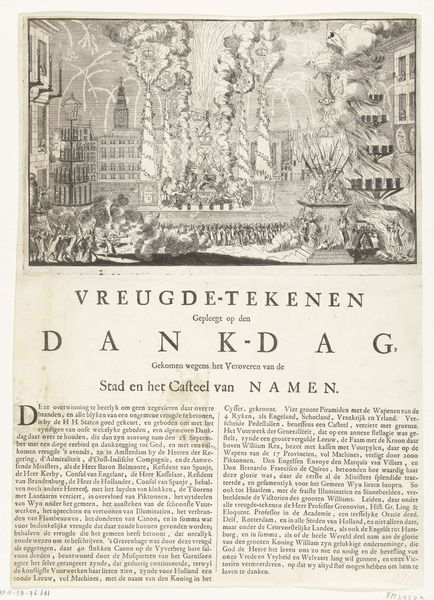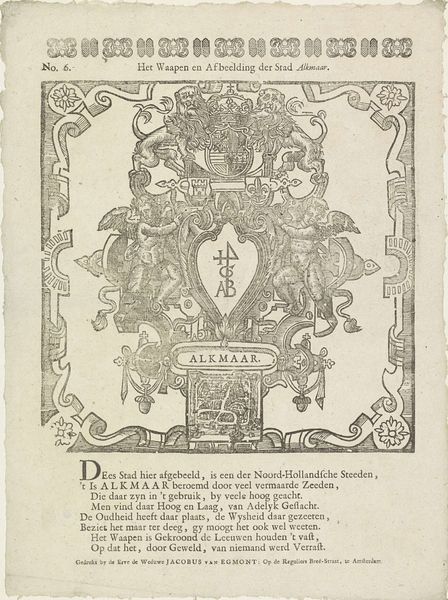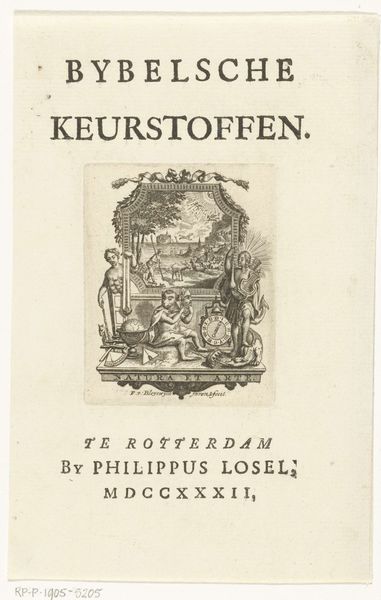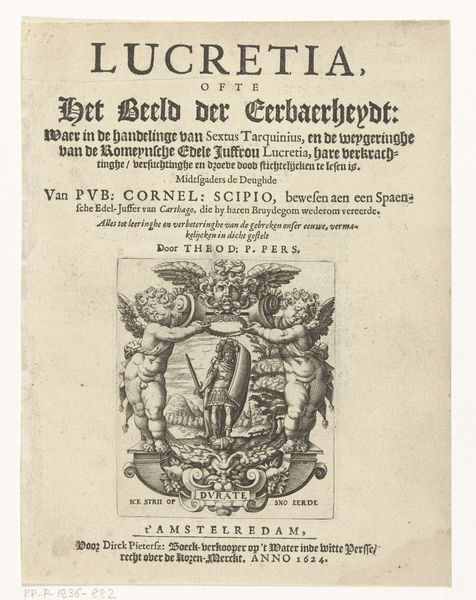
Nieuwe Jaers Wensch, Gedaen van de Klocke-luyders van de Oude Kerks Tooren, Aen de Burgery van Amsterdam, 1708 1707 - 1708
0:00
0:00
graphic-art, print, engraving
#
graphic-art
#
dutch-golden-age
# print
#
old engraving style
#
cityscape
#
engraving
Dimensions: height 366 mm, width 400 mm
Copyright: Rijks Museum: Open Domain
Curator: This engraving, titled "Nieuwe Jaers Wensch, Gedaen van de Klocke-luyders van de Oude Kerks Tooren, Aen de Burgery van Amsterdam, 1708," comes to us from between 1707 and 1708. It's currently held at the Rijksmuseum. What are your first thoughts on this work? Editor: The detailed rendering of Amsterdam as the backdrop is captivating. There's a sort of tension between the quotidian—I mean, a skyline view—and then this intricate typography that screams both proclamation and perhaps, the meticulous labor that went into producing this print. Curator: It’s fascinating, isn’t it? Consider the context: this was a New Year's greeting presented to the citizens of Amsterdam by the bell ringers of the Old Church tower. It served as a public announcement. We see this blending of public service announcement, civic pride and artistry. Editor: Right, because it's more than just a functional piece of civic ephemera. This involved a master engraver meticulously carving that cityscape—labor to serve community. Then there's also a clear hierarchy visible here with city above and coat of arms, these signs of identity and patronage below the written word, of course. What did this craft and the process behind making it signify for Amsterdammers back then? Curator: The graphic, the act of creating these New Year wishes would cement social cohesion. Each impression disseminated this message of civic unity and wellbeing in the period of Dutch prosperity. Plus, we can appreciate the artistry, the visual depiction of Amsterdam as the backdrop is actually a sophisticated form of city branding. Editor: Absolutely. The ink, the paper, even the act of distribution—all tied into systems of production and consumption within the city. Did different segments of society receive varying qualities of this kind of material, revealing a stratified appreciation based on economic or social stature? Curator: A compelling consideration. There might've been variations in the quality of paper or ink used for different impressions of the print, suggesting tiered forms of reception and reinforcing social hierarchies through the consumption of visual media. Editor: So, examining materials, we are not only understanding technique, we're digging deeper into how something ostensibly 'high art' integrates itself into society as commodity or social apparatus. Curator: Precisely! Thinking about who created this print is equally critical to what and why they produced it. This New Year’s greeting tells of civic pride, as well as about the role of institutions and even power structures in 18th-century Amsterdam. Editor: It shifts from just being aesthetic appreciation, moving into this material engagement really reveals layers of economic conditions embedded within art. Curator: Indeed. A fruitful dialogue sparked by just one print, revealing complex networks woven in early modern Amsterdam.
Comments
No comments
Be the first to comment and join the conversation on the ultimate creative platform.
